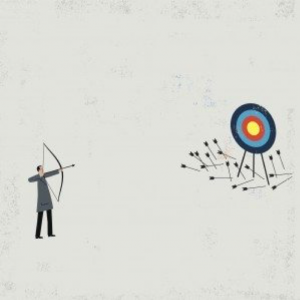How Learning to Fail Taught Me How to Live
December 12, 2015
Many university students will enter university with a preconceived notion about what this part of their life will entail and where it will lead them. Many are pursuing a given pathway because they’ve been told that it’s the right one to lead them to a respectable profession in society, whether that’s a doctor, lawyer, teacher, or researcher. In my experience though, few students will come out with the same perception – or even the same career goals – as they came in with. A lot happens in those four years spent within the walls of the academy. Failure in life is unavoidable. But to a generation of students who are so accustomed to structure, it can be terribly paralyzing.
Structure and stability seem to be a big part of what defines our current generation of students. I don’t blame anyone for being this way; after all, I was very much this way myself and, to an extent, still am. This is how we’ve been educated and, in many cases, this is how we’ve been raised. We want to be successful but we want a formula that will make us successful. What is the best program to take to become a doctor? What is the average we will have to maintain? How many extracurriculars should we pursue and which ones will make our CV the most competitive? While structure is necessary to ensure that our students meet certain developmental and educational outcomes, it can also hinder students’ ability to see beyond a linear path and to step outside of their immediate comfort zones.
Today’s competitive postsecondary environment puts immense pressure on students to succeed. For example, the Bachelor of Health Sciences program at McMaster University is one of Canada’s most sought after undergraduate programs with nearly 4,000 applicants a year and only 160 available spots for first-year students. In 2013-14, nearly 45% of the graduate class pursed a career in medicine, further contextualizing the pressure that students face to maintain good grades and a standout extracurricular portfolio. With such high stakes it is not difficult to see how, for many students, failure is simply not an option.
But what happens when students do fail? When I discovered that being a cancer researcher wasn’t all that I had envisioned based on my limited understanding of biology in high school, it felt as if everything came crashing down. I had been so focused on a single, linear pathway, that I hadn’t considered any other options. Getting through wasn’t easy but it was, in the end, attainable. My parents were instrumental in teaching me that failure was another opportunity for learning which made it so much less scary to contend with! My mentors saw greatness in me even when I did not and inspired me to see myself not as a failure but as someone who was discovering who they could be.

Failure in life is unavoidable. But to a generation of students who are so accustomed to structure, it can be terribly paralyzing. Even just the thought of failure can prevent students from taking risks and trying new things. That is why it is critical that, as university educators, we make our mission not only the delivery of an educational curriculum but also the delivery of the curriculum of life. When we teach our students how to fail, we are simultaneously teaching them how to live.
Different educators may play different roles in promoting what we, the 3M National Student and Teaching Fellows, have affectionately come to call “safe fails.” This isn’t to say that all failure that students will experience will ever be “safe” (as someone put it during the LearningXChange conference, “I’m not sure if there is a way to fail safely. Sometimes you fail in the worst of ways”). But university is the perfect environment to undo the years of restrictive thinking that students have been accustomed to and to teach them something that they can carry forward in their lives. Failure is scary especially when it seems big and life altering, so it’s important to start with things that students can genuinely embrace as valuable learning opportunities.
Opportunities for “safe fails” can be as simple as challenging your students to think outside of the box in your classes and giving them space to do so without penalty (after all, students are often risk-averse because they’re worried about how something is going to affect their grades). Other times, your role may be one that is more involved, for example mentoring a student who seems to have experienced failure or seeing the potential in someone who may never before have been given a chance. Collectively, we can also join forces with other educators to be champions for our students. How do we create a system where students are encouraged to challenge their assumptions and to try new things? Co-operative education, community-engaged learning, undergraduate research and inquiry, interdisciplinary ways of thinking and learning, and extracurricular engagement are just a few examples of opportunities that are likely to have a very positive impact on students’ growth and development.
In truly embracing our educational institutes as places of higher learning, we commit ourselves to understanding that we are not just teaching students about a discipline, but that we are also teaching them about learning and about life. And as such, we must strive to create students who have the courage to look failure directly in the eye and see it not as loss but as an opportunity for truly meaningful learning.

